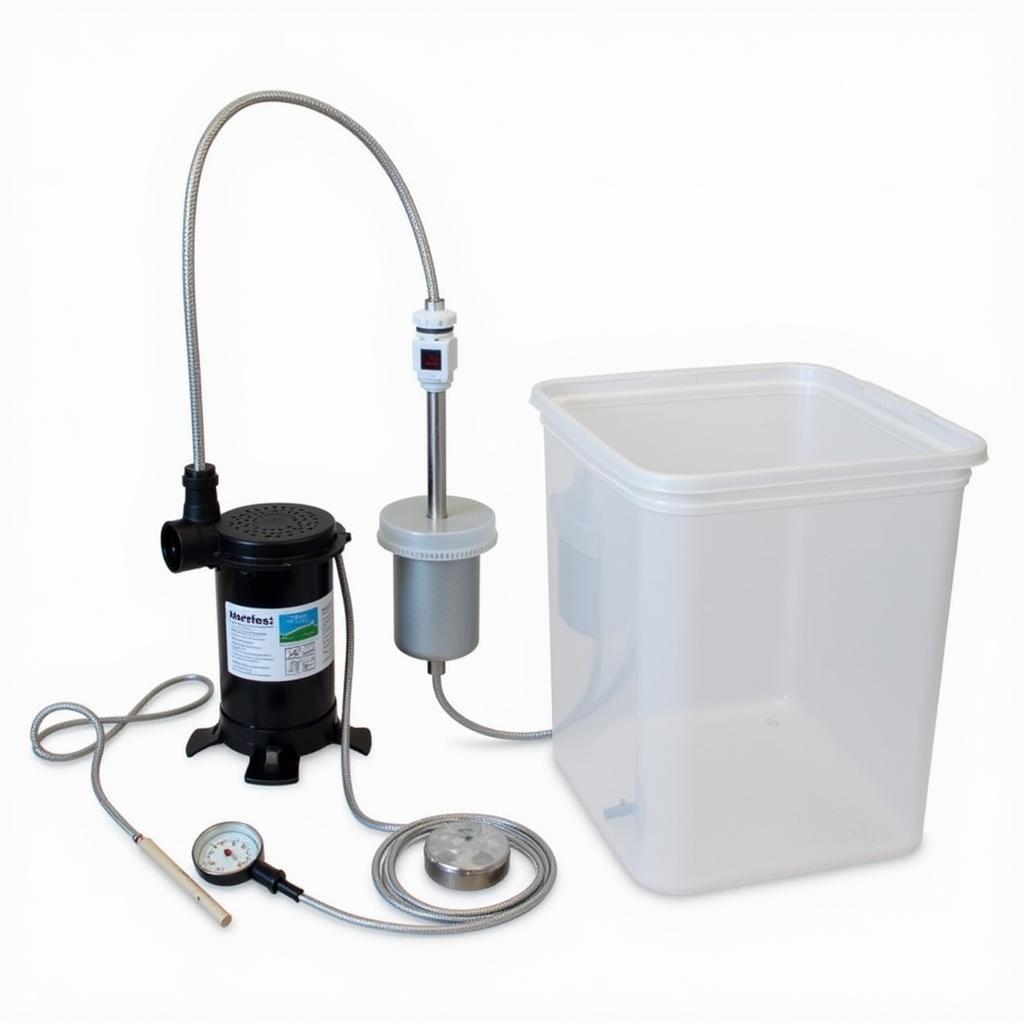A Hospital Tank For Fish is a crucial element in maintaining the health of your aquatic pets. It’s a separate, smaller tank used to quarantine sick fish, treat them, and prevent the spread of disease to the main aquarium. This comprehensive guide will walk you through everything you need to know about setting up and maintaining a hospital tank for fish, ensuring the well-being of your finned companions.
Why You Need a Hospital Tank for Fish
A hospital tank isn’t just a good idea; it’s a necessity for responsible fish keeping. It allows you to isolate sick or injured fish, providing a controlled environment for treatment and recovery. This isolation prevents the spread of disease to your healthy fish in the main tank, and also allows you to administer medications without affecting the water parameters and beneficial bacteria in your established aquarium. Imagine a small, sterile environment dedicated to the recovery of your aquatic friend – that’s the purpose of a hospital tank.
 Hospital Tank Setup Essentials
Hospital Tank Setup Essentials
Choosing the Right Hospital Tank for Fish
The size of your hospital tank for fish will depend on the size of the fish you need to treat. A 5-10 gallon tank is generally sufficient for most common aquarium fish. Larger fish may require a larger hospital tank. Remember, the goal is to provide a comfortable and easily manageable environment for observation and treatment. Avoid overcrowding the tank, as this can stress the already weakened fish.
Essential Equipment for Your Hospital Tank
Setting up a hospital tank for fish requires some specific equipment, distinct from your main aquarium:
- Filtration: A gentle sponge filter is ideal, providing mechanical filtration without creating a strong current that could stress a sick fish.
- Heating: A small heater is necessary to maintain a stable water temperature, crucial for a fish’s immune system.
- Aeration: An air pump and airstone will ensure adequate oxygen levels, particularly important for fish struggling with illness.
- Lighting: Keep lighting subdued to minimize stress. A simple, low-wattage bulb is sufficient.
- Substrate: Bare-bottom tanks are easiest to clean and maintain hygiene. You can optionally use a thin layer of aquarium-safe sand.
 Hospital Tank Filtration and Aeration
Hospital Tank Filtration and Aeration
Setting Up Your Hospital Tank: A Step-by-Step Guide
- Clean and Disinfect the Tank: Thoroughly clean the tank with a solution of hot water and aquarium salt, rinsing well.
- Install the Filter and Heater: Position the filter and heater securely, ensuring they are functioning correctly.
- Add Water: Fill the tank with dechlorinated water from your main aquarium. This helps to introduce beneficial bacteria and acclimate the fish more easily.
- Adjust Water Parameters: Check the water temperature and pH to match your main tank.
- Acclimate the Fish: Gradually acclimate the sick fish to the hospital tank by slowly introducing small amounts of water from the hospital tank into the container holding the sick fish over a period of 30-60 minutes. This helps minimize stress during the transfer.
Maintaining Water Quality in Your Hospital Tank for Fish
Maintaining pristine water quality is paramount in a hospital tank. Regular water changes are essential, removing waste and any medication residues. Aim for 25-50% water changes every other day, or even daily if necessary. Use dechlorinated water and ensure the new water matches the temperature and pH of the existing tank water. “Consistent, meticulous water changes are the cornerstone of successful treatment in a hospital tank,” advises Dr. Emily Carter, DVM, specializing in aquatic animal medicine.
 Hospital Tank Water Change
Hospital Tank Water Change
Treating Fish in a Hospital Tank
Treatment will depend on the specific illness or injury. Consult with a freshwater veterinary hospital or experienced aquarist for diagnosis and appropriate treatment protocols. Never administer medication without a clear understanding of its purpose and dosage. A hospital tank for betta will be very similar to a hospital tank for any other fish, just smaller. You can also learn more about how to set up a hospital tank.
Conclusion
A hospital tank for fish is a critical investment for any fish keeper. It provides a safe and controlled environment for treating sick fish, preventing the spread of disease, and ultimately contributing to a thriving and healthy aquarium. By understanding the importance of a hospital tank and following the guidelines outlined in this guide, you’ll be well-equipped to provide the best possible care for your aquatic companions. Remember, a properly maintained hospital tank can make all the difference in the health and well-being of your fish. Betta hospital tank setup is also crucial for betta fish health.
FAQ
- How often should I clean my hospital tank?
- What size hospital tank do I need?
- Can I use medications in my main tank?
- How do I acclimate a fish to a hospital tank?
- What are the signs of a sick fish?
- Can I use gravel in a hospital tank?
- How long should a fish stay in a hospital tank?
Phone: 02437655121
Email: [email protected]
Address: 298 Cau Dien Street, Minh Khai Ward, Bac Tu Liem District, Hanoi, Vietnam. We have a 24/7 customer service team.